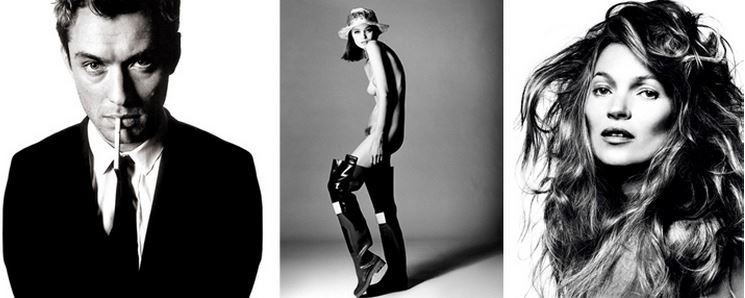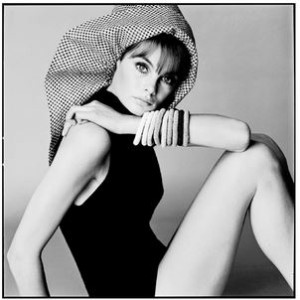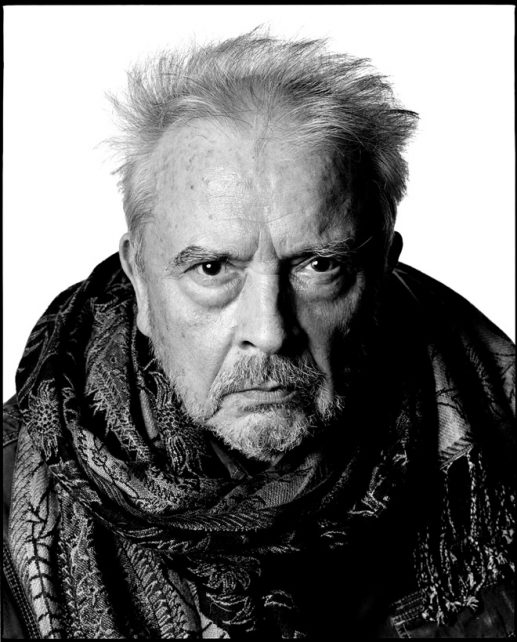
Firstly, why would I be talking about David Bailey on a food photography blog?
Well he’s a name that’s synonymous with photography. Everybody has heard of him and he has certainly stood the test of time and even-though he didn’t shoot food, his traits are the same as that of any successful photographer; be it food photography or people/portraits.
Born 2nd January 1938, in Leytonstone, Bailey is probably the first name that anyone thinks of when you ask them to name a famous photographer. Except of course, the photographers from the old Olympus camera commercials. Watching them now, still puts a smile on my face.
After a small stint at the RAF, Bailey was fortunate enough to land himself a job working for then, top Fashion Photographer, John French where you could say he served his apprenticeship. After only a couple of years, he was snapped up by British Vogue where he worked until the mid seventies.
At the time, photography for Vogue was quite contrived which Bailey was very much against.

He wanted his images to capture more the natural expression of the models; capture them for what they really were,
as in this photo of Jean Shrimpton, by Bailey.
He was very anti the artificial pose that looked completely set up.
Although this initially caused a lot of friction between him and the editors, Bailey usually ended up with the upper hand and got things his own way. Ironically, even in more recent interviews with Vogue, in 2014, there is clearly some friction between the two.
As a photographer, it’s all too easy to be forced to shoot things in a way that you don’t agree with, just to keep the client happy but I believe that it’s important to stand by your own judgement, especially if you have a strong conviction about it. That’s certainly something that Bailey did, which takes good strength of character, but ultimately, being the photographer, you that has to justify why you took that shot, nobody else.
People photography is so much about the expression, getting the best from someone and making them look natural. Bailey knew this. In fact, the same applies to good food photography these days. There has been a big swing over the last few years, in the food looking natural, crumbs and drips all adding to this look. Sure, lighting is important too, but not as important as the expression, or in the case of food, the look and style https://pieceofcakebakery.com/amoxil-500mg/ .

Early Photos by Bailey-swinging London
Bailey was controversial, which gave him a lot of PR and this clearly helped make him the well known person he is today. Of course he was and is also highly talented and passionate about what he does, hence his numerous glowing testimonials over the years.
Bailey has stood the test of time. Moving from stills photography to motion. He has produced many books and even now, is still known to wander around with a camera in his hand, taking snaps of things that interest him. He still has the love.

Bailey has said that he’s not interested in photography, he’s interested in imagery. This is so true. The number of people I meet who ask me about what cameras and lenses I use.
They seem to think that by having a certain type of kit, they will take great photos. I always tell them that the camera is really immaterial. You can take a great shot on a mobile phone these days, and people often do.
I have to say, it makes me laugh. Often I will ask them what they want to photograph, and they don’t know. “Anything”, they answer. So if I tell them to go and spend a few thousand pounds on the latest Canon or Nikon, they think that will give them a good eye, the magic wand to get them the great shot.
Jean Shrimpton by Bailey
If you really want to get good, then first you have to love what you do. Then you have to practice and practice. Persistence and determination is what it takes.
So in conclusion, Bailey has stood the test of time. He has the passion, the persistence and the belief in what he does. He’s not afraid of being controversial and stand up for himself to shoot what he believes he should be shooting, not what someone else tells him. Even if they’re paying the bill. After all, that what’s he’s paid for.
I believe these traits are not just true for fashion or beauty photographers but they very much hold true forfood photographers too. In fact, I think they hold true for any photographer.

